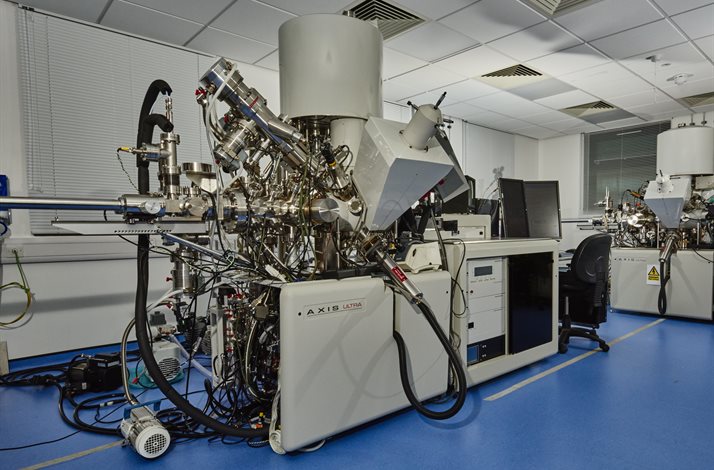X-ray Photoelectron Spectroscopy (XPS) or Electron Spectroscopy for Chemical Analysis (ESCA) is a device that utilizes x-rays to analyze the elements that make up a sample surface. As well as its composition and chemical bonding state by evaluating the kinetic energy of photoelectrons emitted from the sample surface. An XPS device can get information on components within a few nms of the specimen surface using Al K rays. Additionally, the electron state surrounding the atoms is to be assessed. Such as atomic valence electrons and interatomic lengths, causes a chemical shift., is generally higher than that observed in AES, making the apparent ease with which the state of chemical bonds can be detected another added benefit of XPS. Therefore, for polymers, plastics, medical devices, electronics, and other materials, the XPS analysis testing method has a wide range of uses as quality assurance and product testing tools. However, it isn’t perfect in every testing situation.
XPS analysis is a proven choice where surface chemistry or thickness is crucial to product function and safety. It comprehensively analyzes the elements in the material’s surface, including their elemental makeup (in parts per thousand), empirical formula, chemical state, and electronic state. The primary reasons to use XPS as a materials test for your product are as follows:
Listed below are some of its pros and cons
1. Pro: XPS analysis may be used on both organic and inorganic materials.
This method can detect almost all elements with a limit of detection of around ca. 0. i atomic percentage. Therefore, both conductive and insulating specimen can be used for this analysis. For instance, ceramics, glasses, plastics, transistors, metals, composite materials, and highly adsorbed liquids or gases on surfaces. However, it does not detect helium and hydrogen
2. Pro: It analyzes stainless steel passivation
Rust is common in metallic or stainless steel products. Therefore, companies that manufacture stainless steel products aim to ensure they produce rust-free quality and safe products as supposed. Therefore, to verify that material is suited to the task, XPS tests its corrosion, adhesion, and friction characteristics. Also, any chemical reactions.
3. Pro: It identifies surface contaminants
The XPS approach can identify impurities or stains on the small surface layers of plastics or polymers, giving information that might lead to the source of a manufacturing problem. XPS may also offer the empirical formula of a material free of significant surface contamination if suspicious metal interdiffusion is a problem.
4. Pro: It is efficient
When you deal with a seasoned materials processing lab, you may have your analysis completed in as little as 30 minutes, with full findings sent within one business day. Therefore, it saves you time and is very fast in case you need results urgently.
Disadvantages.
Despite its versatility, XPS is not suitable for all materials testing. These are some of the reasons why you might want to think about different forms of material testing. Some of them include:
1. It is limited to the size
In any lateral direction, the sample must not exceed 1 inch (25 mm), and the height must not exceed 12 inches (12 mm). Also, depending on your lab partner, the minimum area of analysis might vary; for instance, some lab’s minimum area requirement is around 1 mm. Moreover, It’s also worth noting that, depending on the sample, size might be a limiting issue. Cutting a sample isn’t always a possibility, and it might result in further contamination of the target region.
2. It is no consistent
In repeated investigations, XPS, like other surface analysis methods, is linked with a 10% relative inaccuracy. Furthermore, the difference between the measured or inferred value and the real value might be as much as 20%.
3. The samples must be suitable for use in a high-vacuum environment.
Samples must be able to withstand a high vacuum environment (about 110-9 Torr). XPS is not the correct test for you if your sample may outgas when placed under a vacuum.
Therefore, XPS analysis not only indicates which elements exist inside the material’s surface but also how they are bound together; XPS analysis is highly appreciated as a measuring technique for a wide range of organic and inorganic materials. Moreover, XPS testing and analysis might aid in troubleshooting for manufacturers that create goods where surface chemistry or thickness is crucial to product performance and safety

